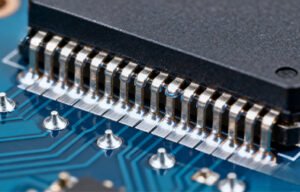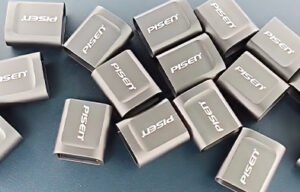Mold Repair with Laser Welding: The Ideal Solution to Extend Mold Lifespan
1. Introduction: The Importance and Challenges of Mold Repair
Molds are essential tools in manufacturing, playing a critical role in producing high-quality products. Over time, molds inevitably experience wear, cracks, or deformation, which adversely affect product quality and production efficiency. Timely and effective mold repair not only extends the mold’s lifespan but also reduces the high costs associated with mold replacement.
However, mold repair faces multiple challenges, including repair precision, weld strength, and control of thermal deformation. Choosing the right repair method is a key part of mold maintenance.
2. Limitations of Traditional Mold Repair Techniques
Traditional mold repair techniques mainly include manual welding, arc welding, and brazing. These methods have several drawbacks:
Large heat-affected zones lead to reduced hardness around the weld, causing deformation or cracking.
Low repair precision, which is insufficient for molds with complex microstructures.
Unstable weld quality with potential defects like porosity or slag inclusion, affecting mold durability.
Long repair cycles and high costs, resulting in decreased production efficiency.
Therefore, the industry urgently requires an efficient, precise, and reliable repair technology to improve mold maintenance.
3. Overview of Laser Welding Technology
Laser welding uses a high-energy laser beam as the heat source to instantly melt the metal surface, achieving the welding process. It features fast welding speed, a small heat-affected zone, and high-quality weld seams. With the development of laser technology, laser welding has been widely used in industries such as automotive manufacturing, hardware processing, and home appliance production.
Laser welding is not only suitable for new mold fabrication but also proven to be an ideal choice for mold repair.
4. Advantages of Laser Welding in Mold Repair
4.1 High Precision Repair
The laser beam diameter can be controlled to the micrometer level, enabling extremely precise welding operations suitable for repairing molds with complex shapes and fine structures. High precision welding effectively prevents damage to the overall mold structure, ensuring the mold’s design dimensions and shape remain intact.
4.2 Minimal Heat Affected Zone
Compared to traditional welding, laser welding produces a much smaller heat-affected zone, reducing thermal deformation and residual stress during welding. This allows the mold to maintain excellent mechanical properties after repair, minimizing the need for subsequent grinding or finishing.
4.3 Stable and High-Strength Welds
Laser welding produces dense and uniform weld seams with strong bonding strength. These welds withstand high temperatures, pressures, and repetitive mechanical stress encountered during mold operation, significantly extending mold service life.
4.4 Time and Cost Efficiency
The high-speed welding capability of laser welding dramatically shortens repair cycles. It also reduces additional machining steps on the mold, lowering labor and material costs. Over the long term, laser welding helps companies save substantial maintenance expenses.
5. Application Scenarios of Laser Welding for Mold Repair
Laser welding technology applies to a wide range of mold repair tasks, including but not limited to:
Repairing wear and cracks on injection molds
Reinforcing local damage on die casting molds
Edge repair of stamping molds
Welding fine cracks in stretching molds
Precision repair of special alloy molds
These applications effectively improve mold performance and stability, ensuring continuous production.
6. Laser Welding Process and Equipment Selection
The typical laser welding mold repair process includes:
Surface Preparation: Cleaning the welding area to remove oil and oxidation.
Process Parameter Setup: Adjusting laser power, speed, and focus based on mold material, thickness, and welding requirements.
Laser Welding Operation: Performing precise weld repair using laser welding equipment.
Post-Processing: Grinding the weld seam and applying heat treatment if necessary to restore mold performance.
Quality Inspection: Using non-destructive testing methods to ensure weld quality.
Regarding equipment, fiber laser welding machines are the mainstream choice due to their high power density, stable wavelength, and ease of maintenance.
7. Case Study: Successful Mold Repair Using Laser Welding
A manufacturer of automotive parts faced frequent production stoppages due to cracks in injection molds. By employing fiber laser welding technology for precise mold repair, the mold’s service life increased by 50%. The weld quality met the original mold strength standards, production efficiency improved significantly, and maintenance costs decreased by 40%.
This case fully demonstrates the practical value of laser welding technology in mold repair.
8. Future Trends of Laser Welding and Its Impact on the Mold Industry
In the future, with advances in automation and intelligent control of laser equipment, laser welding will become more efficient and precise. Integration with robotic automation and big data analytics will enable unmanned operation and real-time quality monitoring during mold repair, further reducing maintenance costs and production risks.
Moreover, environmentally friendly and energy-efficient laser technology aligns with the manufacturing industry’s sustainability goals, propelling the mold sector toward intelligent manufacturing.
9. Conclusion: Why Laser Welding is the Ideal Solution for Mold Repair
Laser welding technology, with its high precision, low heat impact, strong welds, and high efficiency, perfectly addresses the challenges of traditional mold repair. By adopting laser welding, companies can significantly extend mold lifespan, improve production quality, and reduce maintenance costs.
For manufacturers pursuing high quality and efficiency, laser welding is undoubtedly the best choice and a key trend for mold repair in the future.
111-1024x458.png)


